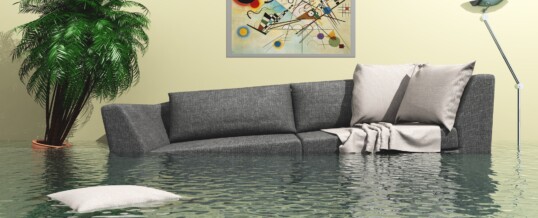
Even the tiniest amount of standing water can cost thousands or tens of thousands of dollars in repairs. A flood damage cost estimator from the Federal Emergency Management Agency pegs just an inch of water as a $10,000 problem.
If that sounds like a nightmare to you… well, who can blame you? Even the first inch of your basement can be home to the artifacts of countless fond memories. Family heirlooms, old photographs, valuable cards, and countless other things live down there.
How can you protect these things, though?
Even worse, what if you already had a leak or even a flood? You’ve already taken the first steps to deal with the damage, presumably. How do you plan to make sure it never happens again?
Basement waterproofing systems can stem the tide. Keep reading, and you’ll learn:
- Why basements get wet
- What systems are out there
- How to waterproof a basement (or have a professional do it)
- What you might pay
- How to address small leaks
Why Does Your Basement Get Wet?
While you might think of major floods and other incidents as the biggest cause of basement flooding, it’s actually better to think smaller. Most basement flooding happens because of small things around the home.
A home with a yard that doesn’t slope at least a tiny bit can start seeing unfortunate drips and trickles. Clogged or inadequate drain tiles can fail, dumping water in instead of out. Sometimes the gutters can get in on the fun, too.
That’s not to say all basement dampness leads to full flooding. Just being below the surface makes basements a little moist. Water travels through unsealed concrete and settles inside.
If your basement is just damp or oppressively humid, waterproof basement flooring or good ventilation might help enough. If you go down to look for the cat and find a puddle, though, you’ll need a little more help.
What Are Basement Waterproofing Systems?
Basement waterproofing includes a mix of internal and external ways of safeguarding the home. Small fixes here and there can do a lot for a basement’s survivability. Most basements use materials like stone or concrete, which can take a bit of water even without any fixes.
Waterproofing a basement can happen inside or outside the basement. These methods differ in their approach and their effectiveness.
Exterior Basement Waterproofing Systems
Exterior waterproofing systems try to stop water from entering at all. An exterior system starts with a trench dug around the basement. Contractors will also lay drain tile, dig a sump pit, and install a sump pump before refilling the trench.
These projects will stop leaks for some years through the walls, but they will not come with a lifetime warranty and do not protect against water from under your home. They can also be cost-prohibitive. You will need to hire contractors, tear out your yard, and spend tens of thousands of dollars.
Not all homes make good candidates for an exterior fix. An addition might make it impossible to access the foundation. Similarly, the lot might be too small to fit the construction equipment that digs that trench.
Interior Basement Waterproofing Systems
Interior systems come in many more shapes and sizes, meeting the needs of specific problems. Not every problem requires big changes to a building’s foundation. Basement waterproofing cost can be reduced significantly by starting with an interior system.
These systems channel water out toward a drainage system or a sump pump once it arrives. The water will follow the path of least resistance, and interior systems make that the path out.
A system has a few key components. Using a sub-floor channel for the water, the system directs it to one or more sump pumps. The number of sump pumps depends on the size of the basement. Most interior systems also include a vapor barrier or wall liner to protect framing, insulation, and drywall.
Next, the system uses a panel or plate along the wall to create separation. This leaves the water with only one place: into the channel and out of the basement.
Expected Costs
Costs vary a lot because basements vary a lot. Is your basement a tiny nook for the cat to hide in or a second home? Does it have many twists and turns and an unusual shape, or is it just a big underground box?
Generally, waterproofing a basement from the inside has a cost calculated based on linear feet. Typical costs clock in at a few thousand dollars for the installation of a new system.
Other Forms of Waterproofing
Sometimes the project doesn’t need a full system. Some flooding has a single source that you can handle where it sits.
Sometimes the problem includes only one area. Stairwells and windows commonly fail this way. That’s why we offer services that target these.
Sometimes the foundation is the problem. You can fix a foundation, but it’s better to perform a comprehensive repair than just shoving some epoxy in it. We perform foundation repair services, too.
Don’t Wait for a Crisis
It’s easy to kick basement flooding prevention down the road. Why install basement waterproofing systems today when you could wait?
Of course, if the changing seasons dump a bucket of water into your basement, you’ll end up having to do it anyway. On top of that, you’ll be paying for whatever damage all that standing water left behind. If that water came from a broken water heater instead, the problems would compound on each other.
Take a look at our services and see what type of basement waterproofing is right for you. We’ve got a gallery full of some of our best work… and some of the work we’ve been called in to fix, too.
ShareDEC
